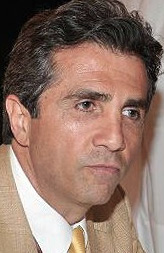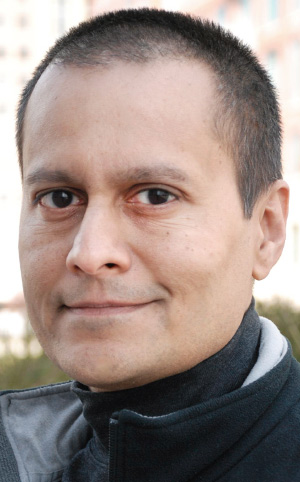

 Last week I asked on a post elsewhere, why we, at the MLi Group, chose to consider speakers, panelists, supporters and sponsors at our Global Summit Series (GSS) as "Thought Leaders" and "Trend Setters? Many wrote me directly offering their answers and then it dawned on me that my answer may (or may not) get appreciated by many at the ICANN community. So here is why we do.
Last week I asked on a post elsewhere, why we, at the MLi Group, chose to consider speakers, panelists, supporters and sponsors at our Global Summit Series (GSS) as "Thought Leaders" and "Trend Setters? Many wrote me directly offering their answers and then it dawned on me that my answer may (or may not) get appreciated by many at the ICANN community. So here is why we do.
 Global IPv6 deployment just passed a major milestone over the past few days when Google's IPv6 adoption statistics showed over 10% of users connecting to Google's sites coming in over IPv6. Considering that only two years ago I wrote here on CircleID about IPv6 passing the 3% adoption mark, this is a great amount of growth to see! If you look on the "per-country" tab of Google's stats you will see that in some countries deployment is much higher. For example, around 25% in the USA, Portugal and Germany, 31% in Switzerland and 44% in Belgium.
Global IPv6 deployment just passed a major milestone over the past few days when Google's IPv6 adoption statistics showed over 10% of users connecting to Google's sites coming in over IPv6. Considering that only two years ago I wrote here on CircleID about IPv6 passing the 3% adoption mark, this is a great amount of growth to see! If you look on the "per-country" tab of Google's stats you will see that in some countries deployment is much higher. For example, around 25% in the USA, Portugal and Germany, 31% in Switzerland and 44% in Belgium.
 The Domain Name System (DNS) offers ways to significantly strengthen the security of Internet applications via a new protocol called the DNS-based Authentication of Named Entities (DANE). One problem it helps to solve is how to easily find keys for end users and systems in a secure and scalable manner. It can also help to address well-known vulnerabilities in the public Certification Authority (CA) model. Applications today need to trust a large number of global CAs.
The Domain Name System (DNS) offers ways to significantly strengthen the security of Internet applications via a new protocol called the DNS-based Authentication of Named Entities (DANE). One problem it helps to solve is how to easily find keys for end users and systems in a secure and scalable manner. It can also help to address well-known vulnerabilities in the public Certification Authority (CA) model. Applications today need to trust a large number of global CAs.
 Near the end of the first decade of this century, the world reached an Internet milestone. The number of Internet-connected devices surpassed the number of people alive on planet Earth. At the time, seven billion devices had already been connected to the Internet, and this went completely unnoticed by most people. This moment represented an important sign of the rapid pace in which we are adopting technology and embracing Internet connectivity.
Near the end of the first decade of this century, the world reached an Internet milestone. The number of Internet-connected devices surpassed the number of people alive on planet Earth. At the time, seven billion devices had already been connected to the Internet, and this went completely unnoticed by most people. This moment represented an important sign of the rapid pace in which we are adopting technology and embracing Internet connectivity.
 There certainly is a lot of interest in the IoT (personal devices) and M2M (industrial applications) market. But what we are seeing is only what is happening on the surface. Most of the IoT and M2M activities are taking place unseen. For example, all new electronic devices (smartphones, tablets, set-top boxes, game consoles) are now IoT devices. Wearable technology has also become a thriving part of the IoT industry, with an ever-broadening range of possible uses and devices, including smart watches, glasses, clothing items, skin patches, and even implants for health monitoring.
There certainly is a lot of interest in the IoT (personal devices) and M2M (industrial applications) market. But what we are seeing is only what is happening on the surface. Most of the IoT and M2M activities are taking place unseen. For example, all new electronic devices (smartphones, tablets, set-top boxes, game consoles) are now IoT devices. Wearable technology has also become a thriving part of the IoT industry, with an ever-broadening range of possible uses and devices, including smart watches, glasses, clothing items, skin patches, and even implants for health monitoring.
 In my last blog post I shared some of the general security challenges that come with the Internet of Things (IoT). In this post, I will focus on one particular security risk: distributed denial of service (DDoS) attacks. Even before the age of IoT, DDoS attacks have been turning multitudes of computers into botnets, attacking a single target and causing denial of services for the target's users. By "multitudes" we can be talking about thousands or even millions of victim devices. Now add IoT into the equation...
In my last blog post I shared some of the general security challenges that come with the Internet of Things (IoT). In this post, I will focus on one particular security risk: distributed denial of service (DDoS) attacks. Even before the age of IoT, DDoS attacks have been turning multitudes of computers into botnets, attacking a single target and causing denial of services for the target's users. By "multitudes" we can be talking about thousands or even millions of victim devices. Now add IoT into the equation...
 Today the Internet Technical Advisory Committee (ITAC) to the OECD published the fifth edition of its newsletter. The ITAC was created in 2009 following the OECD's Seoul Ministerial with the objective to provide Internet technical and policy expertise to the work of the OECD on Internet-related issues. This informal group is coordinated by the Internet Society and currently counts 28 members active in domains such as open Internet/Web standards development, interconnection, IP addressing, security or privacy.
Today the Internet Technical Advisory Committee (ITAC) to the OECD published the fifth edition of its newsletter. The ITAC was created in 2009 following the OECD's Seoul Ministerial with the objective to provide Internet technical and policy expertise to the work of the OECD on Internet-related issues. This informal group is coordinated by the Internet Society and currently counts 28 members active in domains such as open Internet/Web standards development, interconnection, IP addressing, security or privacy.
 A great deal of discussion is taking place about topics such as the digital economy, sharing economy and networked economy. Obviously these are concepts rather than being well-defined, but they are being used by the various players in the market to argue for or against certain developments. For example, in some of the broadband debates around the world, the digital economy is the key reason why national broadband infrastructure gets developed.
A great deal of discussion is taking place about topics such as the digital economy, sharing economy and networked economy. Obviously these are concepts rather than being well-defined, but they are being used by the various players in the market to argue for or against certain developments. For example, in some of the broadband debates around the world, the digital economy is the key reason why national broadband infrastructure gets developed.
 Ever since we first became involved in developing policies and strategies for countries relating to what are now known as national broadband networks, we have argued that those taking part in the strategic decision-making processes of designing these networks should look, not at what broadband can do now, but at what high-speed broadband can do to assist countries to create the best opportunities for future developments.
Ever since we first became involved in developing policies and strategies for countries relating to what are now known as national broadband networks, we have argued that those taking part in the strategic decision-making processes of designing these networks should look, not at what broadband can do now, but at what high-speed broadband can do to assist countries to create the best opportunities for future developments.
 News flash: to help fight California's drought, Samsung is offering a $100,000 prize to the innovator who creates "the most effective use of IoT and ARTIK [Samsung's IoT platform] technology for reducing water consumption by individuals or municipalities." When the average reader of this news headline needs no explanation of what "IoT" means or what this contest is about, we know IoT, or the Internet of Things, is for real. There are already an estimated 25 billion connected devices around the world, according to expert estimates.
News flash: to help fight California's drought, Samsung is offering a $100,000 prize to the innovator who creates "the most effective use of IoT and ARTIK [Samsung's IoT platform] technology for reducing water consumption by individuals or municipalities." When the average reader of this news headline needs no explanation of what "IoT" means or what this contest is about, we know IoT, or the Internet of Things, is for real. There are already an estimated 25 billion connected devices around the world, according to expert estimates.